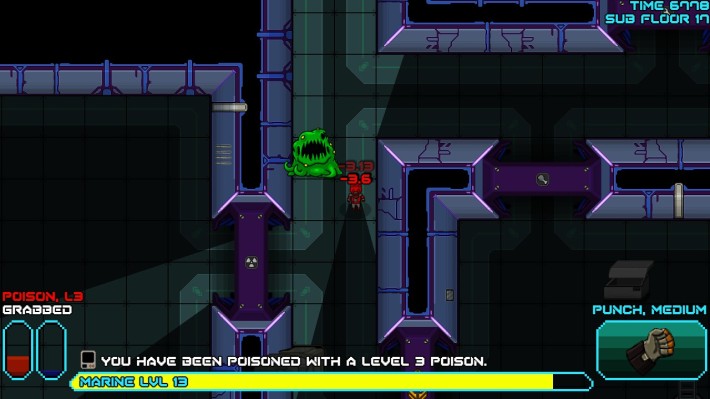So in the Year of Our Lord 2015, I got to write about video games in exchange for actual money. It’s kind of a strange thing to be doing, and it’s highlighted every time someone asks me what I’m “up to” these days (that always means, “do you have a real job yet”).
Anyway, here are six of the reviews I wrote this year, collected for your reading (or possibly, your ignoring) enjoyment.
Might & Magic Heroes VII
“[W]arts considered, Might & Magic Heroes VII isn’t enough of a refinement over VI to justify purchase if you already own that game. It’s unfriendly to newcomers to the series, with nothing that qualifies as a tutorial included out of the box. And fans of the old games may find themselves put off by all the unnecessary visual flash.”
Having loved the early titles in the Heroes of Might & Magic series, I really wanted to love this game. VI was hard to get into, though, and I held out very little hope going into this outing. Turns out, I was right. They made baffling decisions about how to present the game, and while it’s still recognizable as an heir to the series, I think it’s gotten so far off track at this point that I’d be very surprised if it’s ever revisited.
Assault Android Cactus
“[A] very unpretentious game that’s mostly about having fun. There’s the bobbleheaded, space marines-via-Funco Pop design of each character, the bumping soundtrack, and the androids’ distinct voices and senses of humor. Its charm and sense of fluidity and flow make it perfect for short, intense sessions – say 15 to 30 minutes during a quick break.”
Despite having heard murmurs about this game after its appearances at several gaming conventions over the last couple years, I was still surprised at how much fun I had with this game. There are a couple boss fights that seem pretty bogus, but ultimately it’s a very pure bullet-hell score attack game that has tons of Dreamcast-era charm.
Grand Ages: Medieval
“[W]here Crusader Kings II kept players close to the reality of history, Grand Ages seems to use it primarily as window-dressing for its essentially context-free lesson in basic supply and demand economics.”
Other than the fact that they ported this to PlayStation, I have no idea who this game is for. It’s shallow, its systems are oblique without offering depth, and the combat is about as complex as a game of Pogs. To top that all off, the game is ugly as sin.
Armello
“Armello is a remarkable achievement. Instead of simply transferring a board game experience to the TV or computer screen, developer League of Geeks has managed to escape the boundaries of the board game format using modern innovation. Arthur C. Clarke suggested that any sufficiently advanced technology is indistinguishable from magic, and in that light, Armello is quite definitely magical.”
What Armello lacks in depth and consistency, it more than makes up for in utter charm. My main problem is that as formulated, the game doesn’t lend itself to couch-co-op, meaning that the best part of Settlers of Catan — the bantering back and cross around the table — is utterly absent. Even with this out of the picture, it’s still a great experience, and sessions last around 45 minutes to an hour.
Armikrog
From start to finish I spent about four hours playing it, and although there are evidently secrets to find in the game, I can’t imagine I’ll be going back to it now that I’m done. The music and visuals are completely charming, but the game mechanics are broken and the puzzle designs are lackluster.
Having loved the ClayMation features I grew up with in the ’80s, I was fully prepared to love this game, despite its point-and-click adventure format. There’s something to be said for a sense of artistic style and the raw craftsmanship that goes into realizing it, especially in an interactive format like a video game. But all of Armikrog’s charm wears thin within the first hour of play, as you realize there’s really nothing about it that is actually fun, other than to look at the plasticine figures and wish it was a Gumby short.
Dropsy
“Dropsy is a real innocent, a modern “ugly duckling,” and as the game progressed I found myself less and less put off by his appearance and more and more sympathetic toward him.”
I played quite a few point-and-click adventure games in the ’90s, but not because I liked them — it’s because Sierra titles like Kings Quest was for a while all we really had available. It’s a terrible format that I’m glad has mostly died off (despite TellTale’s efforts to bring it back).
Which makes it doubly strange that I loved Dropsy so much, being that it’s just this kind of game, and stars an amoebic clown with a rictus grin, looking to give sweaty hugs to everyone around. But love it I did — Dropsy has an amazing amount of heart, doesn’t overstay its welcome, and features a terrific soundtrack. Play it.

 Another mission I “gave up” on was later in the game, where you’re introduced to another air unit, the air-to-ground Banshee. Here again you’re pitted against the Protoss, and a special mission gimmick again forces you to act quickly – “
Another mission I “gave up” on was later in the game, where you’re introduced to another air unit, the air-to-ground Banshee. Here again you’re pitted against the Protoss, and a special mission gimmick again forces you to act quickly – “